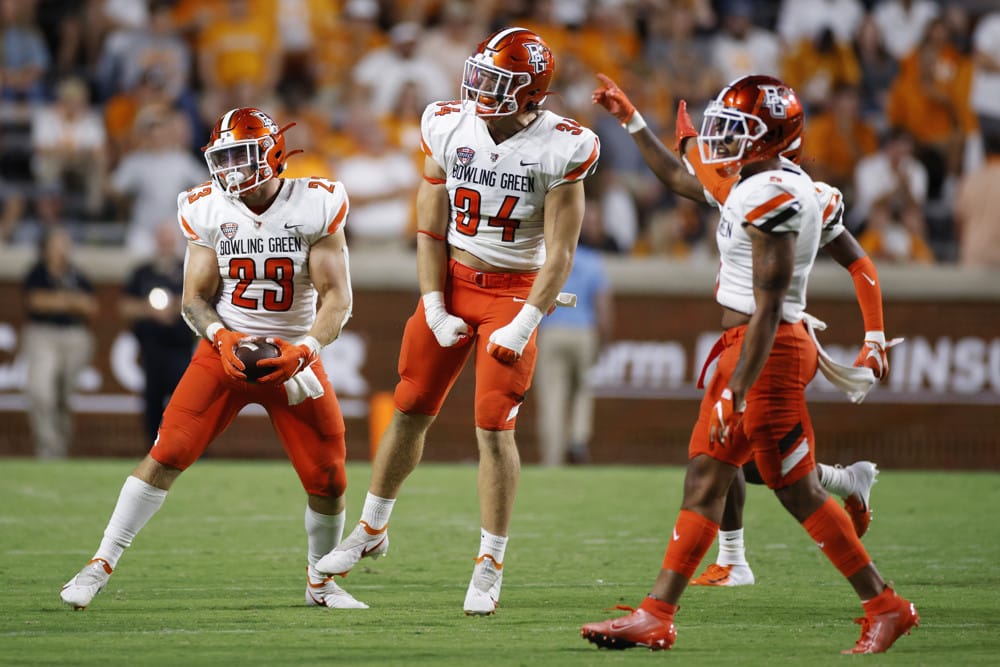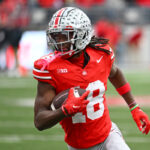Team History
The Bowling Green Falcons football team’s history is a testament to resilience, growth, and tradition within American college football. Since its inception in 1919, the program has evolved from a modest beginning with just 19 players to a formidable force in the Mid-American Conference (MAC). This journey from the Bowling Green Normal School’s modest football program, grappling with the scarcity of resources, to a well-respected collegiate team underscores the Falcons’ enduring spirit and determination. Early challenges, including limited equipment and facilities, laid the foundation for a culture of perseverance and ingenuity that continues to define the Falcons today.
As the program matured, it began to attract attention for its competitive spirit and the development of talented players and coaches. With 20 different head coaches through the decades, including notable figures such as Doyt Perry, Urban Meyer, and Dave Clawson, the Falcons have left a significant mark on college football. The program’s ability to continuously adapt and overcome challenges has contributed to its reputation as a cradle of coaching talent and a producer of professional athletes, with over 60 players drafted into the NFL. This legacy of excellence and the ability to cultivate talent at the highest levels speaks volumes about the program’s impact on and off the field.
Foundation and Early Years
Bowling Green’s football program faced numerous obstacles in its early years, struggling to establish a winning record within the Ohio Athletic Conference (OAC). Despite these initial setbacks, the dedication of players and coaching staff eventually led to the Falcons’ first winning season in 1936, signaling the beginning of a turnaround for the program. The construction of University Stadium in 1937 represented a significant investment in the team’s future, providing a dedicated space for games and fostering a sense of pride and belonging among the players and the broader university community.
This period was crucial in laying the groundwork for future success, as it was characterized by a steadfast commitment to building a competitive team despite limited resources and challenges. The Falcons’ performance in the late 1930s and early 1940s, including notable seasons and achievements under coach Robert Whittaker, demonstrated the potential of the program. By focusing on strategic gameplay and harnessing the talents of its players, Bowling Green began to emerge as a formidable contender in collegiate football, setting the stage for decades of success and innovation in the sport.
Notable Early Achievements
The era of Coach Doyt Perry marked a significant turning point for the Falcons, ushering in a period of unprecedented success and setting a high standard for future generations. Perry’s leadership transformed the team’s culture, emphasizing discipline and strategic play, which quickly translated into on-field success. His tenure saw the Falcons achieving their first MAC Championship and a National Championship in 1959, milestones that solidified Bowling Green’s status as a powerhouse in collegiate football. Perry’s impact extended beyond wins and losses, as he instilled values of excellence and teamwork that continue to influence the program.
Following Perry’s era, the Falcons continued to build on their legacy, adapting to changes in the collegiate landscape and maintaining competitiveness through strategic coaching hires and player development. The program’s ability to consistently produce All-Americans and NFL players speaks to the effectiveness of its training and mentorship. Bowling Green’s history is marked by periods of remarkable achievements, including multiple conference championships and bowl game appearances, which have contributed to its reputation as a breeding ground for talent and a respected competitor in the MAC.
Periods of Change
The Bowling Green Falcons football program has undergone numerous periods of change, marked by shifts in coaching, strategy, and conference affiliation. These transitions have been pivotal moments for the team, offering opportunities for renewal and growth. The succession of head coaches, each bringing their unique philosophy and approach to the game, has ensured that the Falcons remained adaptable and competitive. Notably, the leadership transitions from Doyt Perry to Urban Meyer, and then to coaches like Dave Clawson and Dino Babers, highlight the program’s commitment to excellence and innovation.
These periods of change have also been characterized by the Falcons’ ability to navigate the evolving landscape of college football, maintaining a competitive edge through strategic recruitment and player development. The adaptability of the program, reflected in its resilience through coaching changes and its success across different eras, underscores the strength of the Falcons’ identity and the depth of talent within the team. This enduring spirit of adaptation and pursuit of excellence has kept Bowling Green at the forefront of collegiate football, contributing to its rich history and promising future.
Championships and Achievements
The Bowling Green Falcons have a storied history of success, highlighted by multiple MAC championships and a distinguished national championship in 1959. These achievements are a testament to the program’s enduring competitiveness and its ability to excel at the highest levels of collegiate football. The Falcons’ consistent performance in conference play and their success in bowl games reflect the program’scommitment to excellence, both on and off the field. The program’s championship history not only brings pride to the university but also serves as a beacon, attracting talent and fostering a culture of winning. From the early successes under coach Doyt Perry to more recent victories in the MAC, Bowling Green’s football program has demonstrated a remarkable ability to compete and succeed against formidable opponents. This legacy of championships and achievements underscores the Falcons’ status as a dominant force in the MAC and a respected program nationally.
The Falcons’ bowl game appearances further highlight the program’s competitive spirit and its ability to perform on the national stage. Despite the inherent challenges of competing in bowl games, Bowling Green has secured notable victories that have contributed to the program’s prestige and appeal to prospective players. The Falcons’ resilience and determination in bowl games, coupled with their success in conference championships, reflect the program’s commitment to excellence and its pursuit of national recognition. This blend of historical success and ongoing competitiveness forms the cornerstone of Bowling Green’s proud football tradition.
Current Roster
The current roster for the Bowling Green Falcons football team for the 2024 season includes a diverse group of players from various backgrounds and with different levels of experience. Key players include seniors Malcolm Johnson Jr. (WR), Jordan Oladokun (CB), and Brock Horne (ILB), alongside younger talents such as Lucian Anderson III (QB) and Terion Stewart (RB). The team showcases a mix of senior leadership and promising underclassmen across all positions, promising a dynamic and competitive season.
Management and Coaching Staff
Under the leadership of Head Coach Scot Loeffler, who took over the program in 2019, the Bowling Green Falcons have embarked on a new era, aiming to build upon the program’s storied history with fresh strategies and perspectives. Loeffler’s background and vision for the team play a pivotal role in shaping the program’s direction, emphasizing the development of student-athletes and the pursuit of success both on and off the field. The coaching staff, with their diverse expertise and commitment to the program’s values, are integral to the Falcons’ efforts to compete at a high level and develop a winning culture.
Home Stadium Information
Doyt Perry Stadium, with its rich history and capacity of 24,000, serves as a bastion of support for the Bowling Green Falcons, offering a competitive advantage during home games. Named after the legendary coach Doyt Perry, the stadium is a symbol of the program’s glorious past and its ambitions for the future.
The facility’s modern amenities and FieldTurf playing surface provide an optimal environment for players and an engaging experience for fans, embodying the community’s support for the Falcons. As the home of Bowling Green football since 1966, Doyt Perry Stadium is not just a venue for games; it’s a place where memories are made, and traditions are cherished.
-
*********** ***** ******* *** ***** ** ************ **** ********* *****dd.mm.yyyy 00:00 PM
-
****** *********** **** ** ***** ****** *** **** *** ******: ********* *** ******* *** ****'* ****dd.mm.yyyy 00:00 PM
-
*********-***** ********: **** 6 **** *** ***** *** * ********* **** 7dd.mm.yyyy 00:00 PM
-
**********-************ *******: ****** ****ć, ******* *******, *** * ********* ********** ********dd.mm.yyyy 00:00 PM
-
********* **** ********* ** *** ***: ********* *** ********* ** ****** ******** **. *** *** *****dd.mm.yyyy 00:00 PM
-
****************** ******* **********: *** ********' **** ****dd.mm.yyyy 00:00 PM







